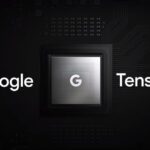Tensor Chipsets In Real-Life Scenario
Google Tensor chipsets are bad when compared with counterparts like Snapdragon or Apple Bionic chipsets. If you compare the recently launched Pixel 9 Pro XL which features Google’s latest Tensor G4 chipset with the Galaxy S24 Ultra (Snapdragon 8Gen 3) or iPhone 16 Pro Max (Bionic A18 Pro), you would notice a huge performance gap in Tensor G4 powered Pixel 9 Pro XL. Both Galaxy S24 Ultra and iPhone 16 Pro Max destroy Pixel 9 Pro XL in the performance department, and also they put Tensor’s dignity into shame. For context, the following are the Geekbench and Antutu scores of Pixel 9 Pro XL, Samsung S24 Ultra, and iPhone 16 Pro Max (Tested by 91mobiles).
| Device | Geekbench Multi-core | Antutu Overall Score |
| Google Pixel 9 XL | 4419 | 1,323,184 |
| Samsung Galaxy S24 Ultra | 6752 | 1,770,105 |
| iPhone 16 Pro Max | 8021 | 1.774,105 |
Here you can see both Snapdragon 8Gen 3 and Bionic A18 Pro crashed Tensor G4 in the performance department and Tensor is not even close. For those who don’t know it has been happening since the first introduction of Tensor chipsets and every year the results are almost identical. Now the question is: Why is it happening? Why Tensor chipsets are bad? Why did Google introduce the Tensor chipsets? What purpose it is serving? Let’s find out.
Why Google Introduced Tensor Chipset
In 2021 Pixel 6 devices came with Google’s first custom-designed Tensor chipset. Google’s main purpose behind introducing the Tensor chipset was to rival the iPhone’s excellent chip-level software integration and to excel in AI and machine learning capabilities on Pixel devices. Before Tensor, Google was using Snapdragon chipsets on their Pixel handsets. The main two problems with the Snapdragon chipset were:
1. Problem With Snapdragon Chipsets
Google was unable to excel in AI and machine learning capabilities on Pixel smartphones as the Snapdragon chipsets were restricting Google on chip level base. Therefore Google was unable to introduce new exciting software features.
2. Problem With Snapdragon Chipsets
Google was willing to evolve Pixel smartphones around software capabilities and they wanted to surpass iPhones in this department but Snapdragon chipsets were restricting them. Google was required to design its own custom-designed chip to solve this problem. Therefore, Google decided to develop a custom-designed chip named Tensor. Tensor chipset was able to fulfill Google’s need in the software department and Google was able to build a unique combination of hardware, software, and AI in Pixel smartphones.
But What Went Wrong With Tensor Chipset
No doubt, Tensor chipsets are AI and machine learning beast and iPhone is not even close but the problem with Tensor chip is its performance. Tensor chipsets are heavily underclocked to prevent excessive heating and battery draining issues which come due to Samsung’s chip fabrication node. Samsung’s chip fabrication is not as efficient as TSMC’s fabrication process. Therefore, Apple, Qualcomm, MediaTek, Nvidia, and even Tesla use TSMC’s fabrication process to fabricate their custom-designed chip. That is why Samsung’s own Exynos chipset and every-gen Tensor chipsets are not on the level of Snapdragon or Apple Bionic chipsets. Samsung’s chip fabrication foundry is super inefficient and the yield rate is really low. That is the reason despite manufacturing their own Exynos chipsets, Samsung uses the latest generation Snapdragon chipsets on their flagship Galaxy S and Z lineup. But why Google is not moving to TSMC’s foundry? Why they are still sticking with Samsung’s inefficient fabrication process? There are plenty of reasons behind this. Let’s discuss.
Why Google Uses Samsung’s Chip Fabrication Node
As we discussed Samsung’s chip fabrication node is super inefficient as compared to TSMC. But despite that, Google is choosing Samsung. Well, here are the reasons.
1. Google-Samsung Partnership
Well, it is no secret that Google and Samsung have a strong relationship. And since the launch of Pixel 6 handsets, the relationship is stronger than ever. On one hand, Samsung is helping Google to build custom Tensor chipsets. On the other hand, Google is helping Samsung in the software department. That is the reason Google’s own developed features like circle to search were first introduced on Galaxy S24 devices. Secondly, Google is using Samsung’s 5G cellular radio technology. Since Intel is not active in this department, Google has only two choices, either Samsung or Qualcomm. Therefore, Google has an easy choice in the form of Samsung (Google-Samsung Partnership). Both Google and Samsung have a strong relationship and the Tensor project is one of its big outcomes.
2. Low Production
It is a harsh reality that Pixel smartphones are not as popular as iPhones or Galaxy handsets. For context, since the launch of 1st Pixel smartphone in 2016, Google has managed to ship only 40 million Pixel devices till 2023. This figure is really low and this is the reason Google is restricted to producing a very low number of Pixel devices each year, and also this is one of the prime reasons why Google is not able to choose TSMC over Samsung. TSMC is a giant in the chip fabrication department and Samsung is not even close. Here is a list of the top 10 TSMC customers of 2024.

After checking out this list you would notice Google is nowhere making the amount of devices these companies are making. So any day TSMC would prefer their top customers like Apple or Qualcomm over Google easily. And every year TSMC has been fabricating a limited amount of chipsets. So it is really hard for Google to get a chance in front of Apple, Nvidia, or Qualcomm. TSMC’s top customers get the first options for the capacity and also early options on new technology. That is why Google has no choice but to choose Samsung for the chip fabrication.
Now you can easily understand why Tensor chipsets are performing very bad and why Google is restricted to Samsung’s chip fabrication node.






chuT iezna havQhs
ZkP AyQu vPXoZEq KHHXLF